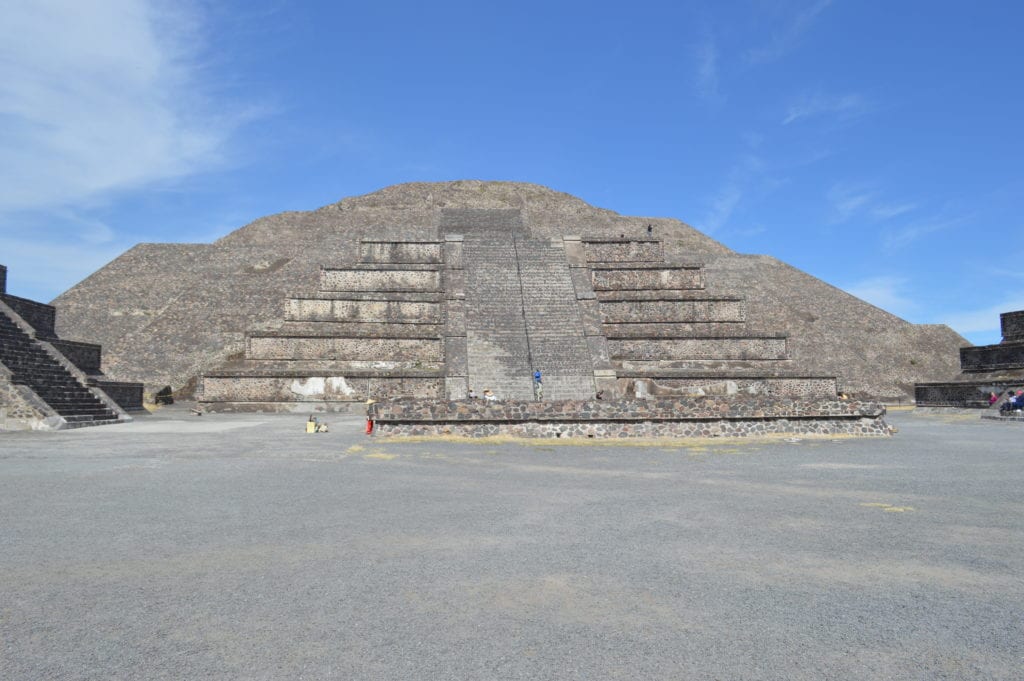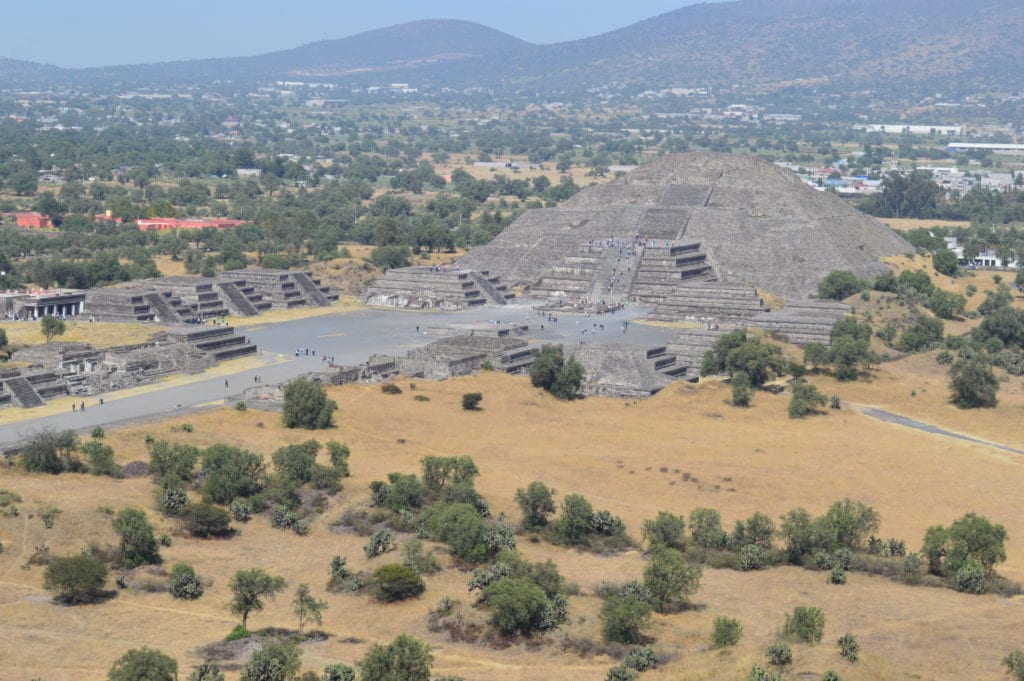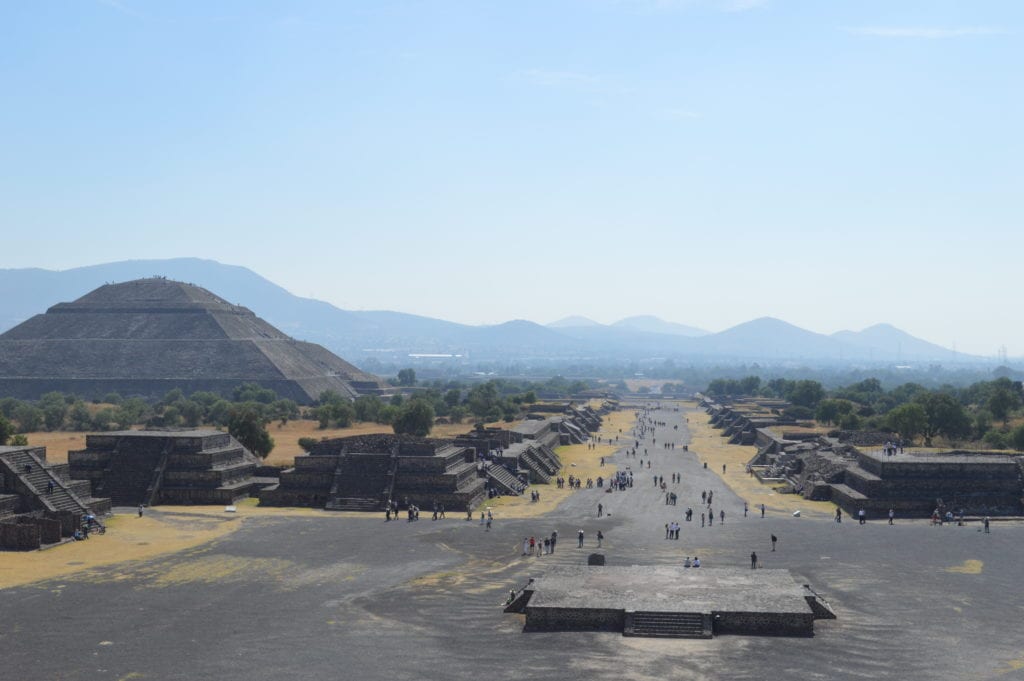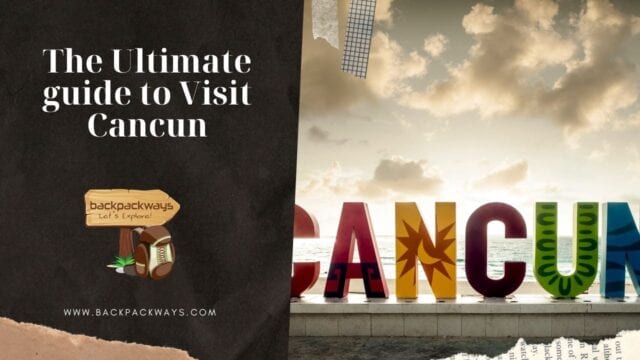Teotihuacan is one of Mexico’s eminent attractions. It depicts the pre-hispanic era in Mexico. Teotihuacan is one of the left behind symbols of the Mayan Era. The emblematic Mesoamerican pyramids (Pyramids of Sun and Moon) that dominate the archaeological complex venerated a deity within Teotihuacan society. These were once a place of worship and to some, it still is.
Teotihuacan:
Teotihuacan and its valley bear a unique testimony to the pre-urban structures of ancient Mexico. It integrates the natural components of the city’s urban planning, such as San Juan River, whose flow was modified to intersect the Avenue of the Dead. This north-south positioned principal reference axis (The Avenue of the Dead) is lined with complexes and monumental buildings, from which the Great Compound with the Temple of Quetzalcoatl (also known as Temple of the Plumed Serpent) as well as the Pyramids of the Sun and the Moon, stand out. One aspect of the city’s religious and civil architecture is the talud–tablero, which became a distinctive characteristic of this culture. The city displays an emblematic significance to the large-scale planning and model of urbanization, which greatly transformed the conceptions of contemporary and subsequent cultures.
Places of Interest:
- Templo De Sol (Temple of the Sun).
- Templo De Luna (Tempe of Moon).
- Temple of Quetzalcoatl (Plumed Serpent).
- Avenue of The Dead.
- Teotihuacan Site Museum.
Temple Of Sun:
Temple of Sol (Sun) is one of UNESCO’s cultural heritage sites. Being third largest ancient pyramid in the world after Pyramid of Cholula in Mexico and Pyramid of Giza in Egypt. The pyramid of Sun was constructed in 200 CE. Natives of Teotihuacan believe that the pyramid was built over a man-made tunnel leading to a “cave” located six metres down in the centre of the structure. Besides being recognised as the largest building in Teotihuacan complex, Temple of Sun is also one of the largest in Mesoamerica.

Temple Of Luna:
Templo De Luna (Temple of the Moon) was constructed between 200 and 250 AD. An inclined wall in front of the staircase descends to the Avenue of the Dead and a platform on the summit of the pyramid was used to conduct ceremonies in honour of the Great Goddess of Teotihuacan, the goddess of the earth, fertility, water and even creation itself. Natives call it Tenan, which in Nahuatl (widely spoken in Central Mexico) means “mother or protective stone”.


Temple of the Quetzalcoatl (Feathered Serpent):
This temple has seven stepped bodies on all four sides. The walls are decorated with plumed serpents, carved in stone. Quetzalcoatl is considered as the originator of human activities on earth, creator of the land and calendar. It is believed by Teotihuacanos that the temple was built between 150 and 200 A.D. to venerate the sacred calendar cycles.
Avenue of The Dead:
Avenue of the Dead is the main roadway in the archaeological complex. It runs in a north-south direction and forms a right angle in the centre of Teotihuacan with the intersection of the East-West avenue which divides the city into four sectors. The group of buildings that line both sides of the Avenue belonged to the temple complexes were designed specifically for the state’s political-administrative and civic-religious activities as well as to dwelling areas for the society’s top-level hierarchy, consisting mainly of priests.


Teotihuacan Site Museum:
You can’t fail to visit the museums inside and outside of the archaeological complex. The Teotihuacan Site Museum exhibits interesting samples of their work in pottery, obsidian, bone and shell made by the ancient dwellers of the City of Gods.
Getting There:
Zocalo is the focal point of the city’s main plaza. It was once the main ceremonial centre in the Aztec city of Tenochtitlan. Zocalo is home to many hostels and BnBs.
- From Zocalo Metro Station, take a metro to Hidalgo (Direction Cuatro Caminos) then change to Green Line bound to Indio Verdes and get down at La Raza where you need to change to the yellow line and get down at the next station Autobuses de Norte (Direction Politecnico).
- Once you come out of the metro station the bus terminal will be right in front of you.
- Approach the counter near Gate 9 where you can buy the ticket to Teotihuacan, the first bus leaves at 6 am and every 30 minutes from then.
- The bus would drop you right outside the National Park where you would need to buy an entrance ticket.
Cost:
- Metro From Zocalo to Terminal De Autobuses and back – 10 Pesos.
- Bus to Teotihuacan and back – 100 Pesos.
- Entrance to Teotihuacan – 70 Pesos.







Very beautiful and historical site to visit . Well narrated too